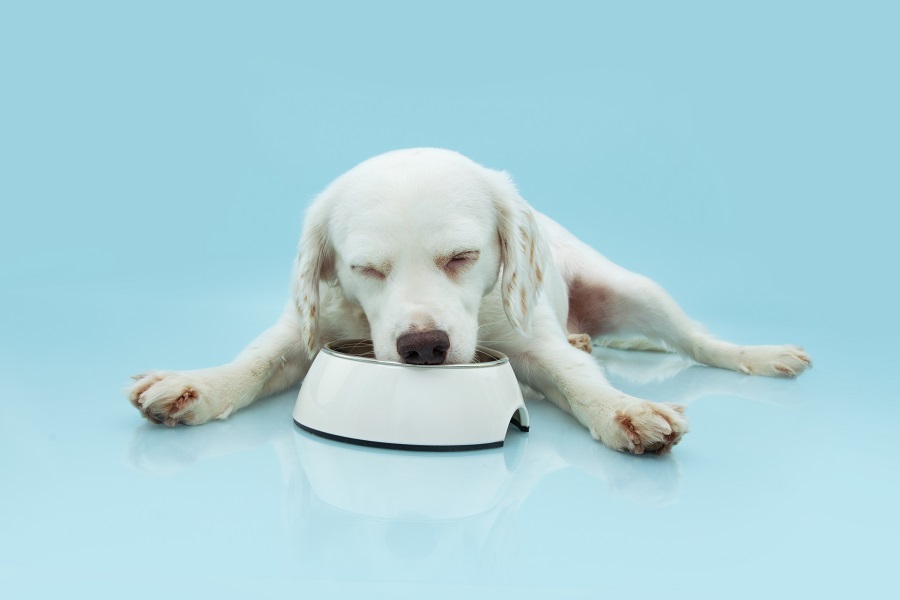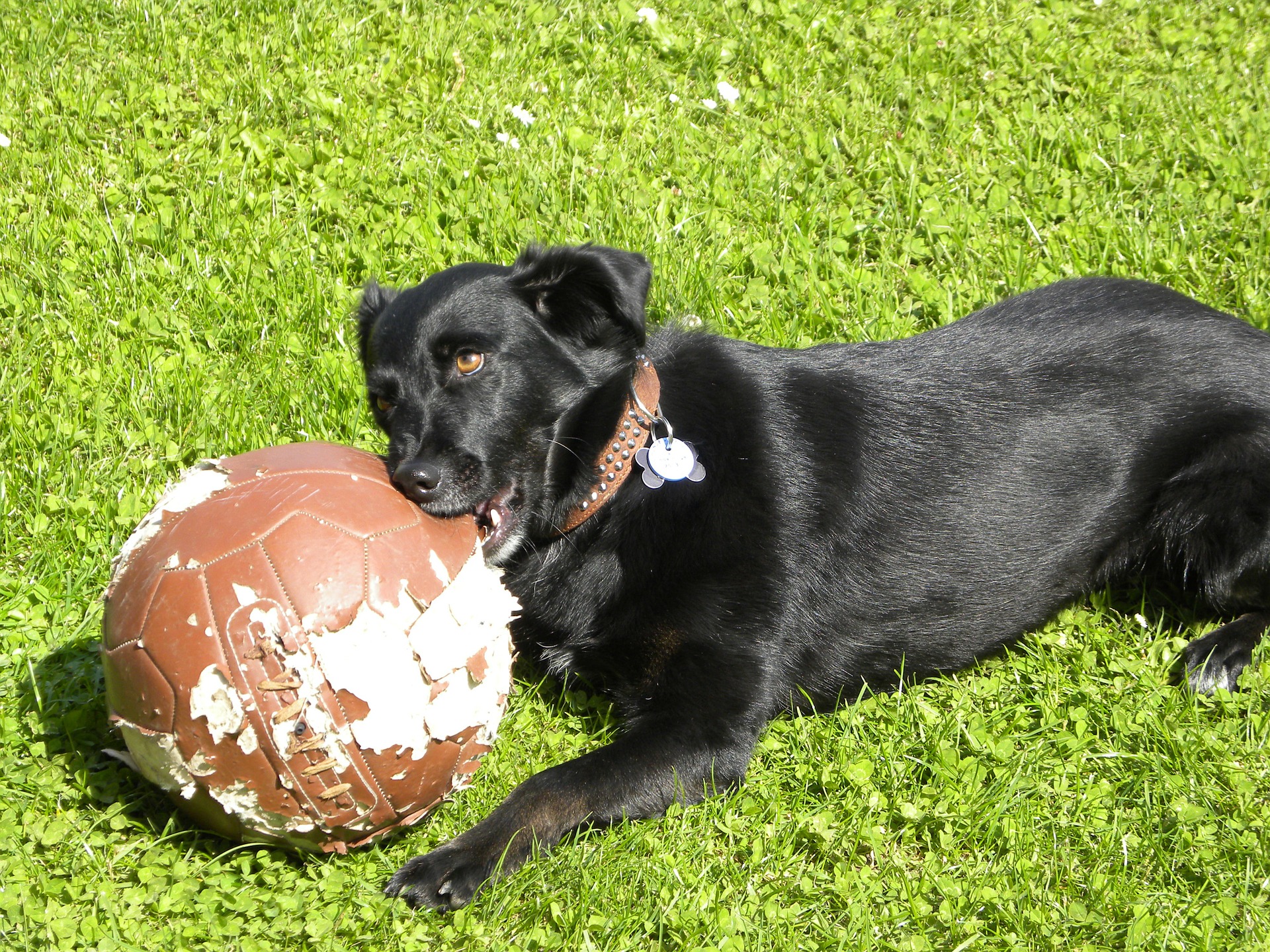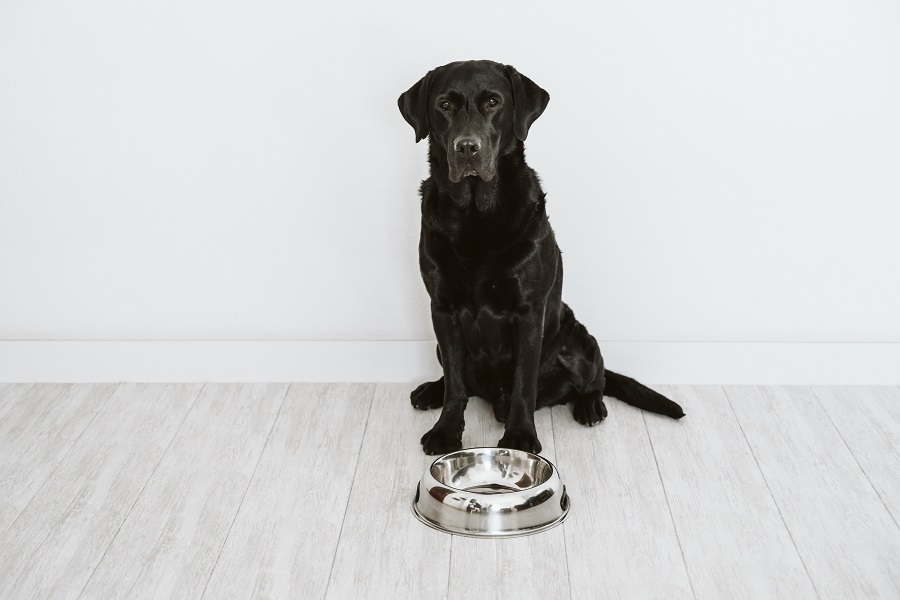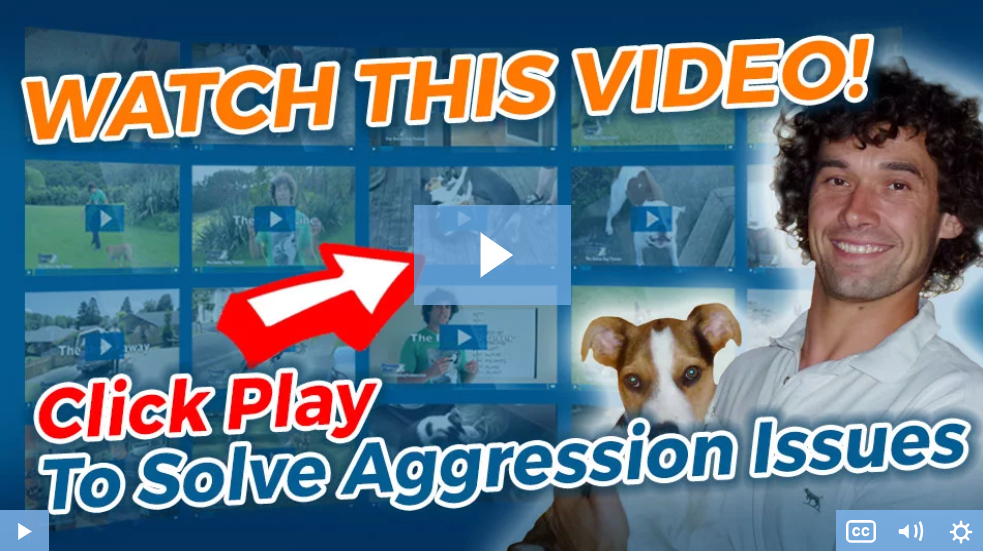If you’re looking for advice on how to stop food aggression in dogs then this is the most important page you’re ever going to read.
For most owners, dinner time is usually thought of as a stress-free occurrence where your dog can enjoy themselves and chow down.
However, it’s important to be aware of the pitfalls of getting mealtimes wrong!
The problem with this particular type of aggression is that dogs value hierarchy and the ‘pecking order’ above all else. And food is one of the more common ways that dogs establish a hierarchy between packmates.
Put simply food aggression occurs when your dog sees itself as the pack leader, making it potentially tricky when it comes to establishing order in the home.
Worse still, if it’s not dealt with in a timely manner. Their behavior can often escalate into other forms of aggression beyond the food bowl.
You need to understand that dogs don’t think like we do, their brains aren’t wired the same which means you need to demonstrate pack leadership in order to quickly get to grips with any unwanted aggression.
However, if you can learn to do this successfully, food aggression can be eliminated in a matter of days… sometimes less.
Now, before we get into the do’s and don’t of dealing with food aggression, first a quick heads up.
While aggressive behavior in dogs can be managed effectively, the real magic happens when you learn how to teach your dog how to remain calm and in control of their emotion.
Pair this with the critical element of learning how to establish yourself as the pack leader, and you’ve got the ultimate recipe for a well, behaved obedient dog that follows your every command.
This is why before you do anything else, I’d highly recommend checking out the Dog Calming Code from Dan Abdelnoor over at The Online Dog Trainer. (see video below)
Watch the video, implement the training Dan recommends, and you should see a huge improvement in your dog’s ability to stay calm around the food bowl. While ultimately seeing you as the pack leader.
Here’s the link to take a look: Click Here To Discover How To Finally Stop Your Dogs Food Aggression… Even If You’ve Tried & Failed Before!
(video will open in new window)
Signs of Food Aggression in Dogs
While your dog may not exhibit food aggression every day, there are several signs you can observe to know if your dog is aggressive when eating.
These signs can be mild, moderate, and severe. Mild symptoms are usually recognized through verbal signs.
Moderate food aggression is when a dog starts lunging or snapping when they see another dog or a person approaching them while they eat.
Severe food aggression can be quite dangerous to people and other dogs and pets because dogs can bite or violently chase away their perceived threat.
Here is a list of the most common signs you can observe to recognize your dog’s food aggression:
- Growling while eating
- Growling when a person or another dog comes near their food bowl
- Harsh food guarding
- Lunging when someone tries to take away the food
- Attacking another dog violently over food
- Raising hackles when someone or another dog walks nearby while they eat.
If you observe any of the above signs in your dog, they are displaying food aggression.
Now, you must be wondering what could be the cause of aggression around the food.
If so, read on to discover the potential reasons your dog attacks and why they specifically attack over food.

Causes of Food Aggression in Dogs
While there isn’t one leading cause of food aggression in dogs, there are so many reasons why dogs attack other dogs or people over food.
Here are some of them:
1. It Can Be Learned in Puppyhood
Your dog might have learned the food aggression behavior in their puppyhood. It could have been either by accidental training practices or the need to compete over scarce resources.
According to science, your dog may attack your other dog over food if it has experienced intense competition for food from its puppyhood.
If you have ever seen street or village dogs, especially in developing countries where dogs search for their own food, you must have realized that they are very aggressive when eating.
This aggression is manifested because they value the food they find, and they obviously don’t want to share it.
But for well-fed dogs, this is a rare cause of food aggression.
Nonetheless, when you feed your dogs together when they are still young, they may develop the urge to compete for food. Hence, they may turn out to be aggressive when eating.
2. Trauma
As with human beings and other animals, dogs can experience post-traumatic disorders, which can be displayed through food aggression.
Specialists indicate that trauma can be a massive trigger to food aggression in dogs. For instance;
When a dog loses their caretaker or puppies, they may get traumatized.
Trauma in dogs can also occur when a dog is physically abused or neglected, through natural disasters, or after fighting with another dog.
Trauma makes a dog fear that the threatening source might arise again and leave them devastated. Thus, they become aggressive in an attempt to overcome their fear source.
In this case, a dog can develop food aggression when they are already mature.
When a dog develops food aggression when they are already grown, they may suddenly become overprotective for their resources like food and shelter.
Therefore, they may start attacking other dogs and pets over food. Sometimes they may also attack humans.
3. Genetic Predisposition
Some dog breeds are naturally aggressive.
Genetic predisposition is a genetic quality that influences the possible phenotypic development of an animal. An aggressive dog may pass down their aggressive trait to their puppies.
When a dog inherits the aggressive trait from their parents, it can be challenging to prevent their aggression.
These dogs have a perception that they need to guard their resources against people or other dogs. Hence, they may exhibit food aggression when eating.
Solving genetically predisposed food aggression in dogs can be challenging. It requires thorough training and incorporating relevant practices.
4. Medical Problems
If you learn that your dog is always growling when eating, it could be a medical issue or injury that causes anxiety, shaking, or pain when the dog is eating.
Moreover, dogs with dental issues or eye problems may feel threatened when eating because they can’t eat fast or see their surroundings.
Therefore, it would help if you take your dog to a vet and explain to them the dog’s food aggression behavior.
(video will open in new window)
How to Stop Food Aggression in Dogs
To some people, one dog attacking another over food is normal. However, they forget that these dogs can be aggressive towards children and other pets.
Aggressive dogs may injure you, your children, or even other pets through bites and scratches.
Also, your dog attacking your other dog over food may signal an underlying medical condition that needs quick attention.
Thus, it is essential to learn how to prevent and stop food aggression in your dog.
1. Let Your Dog Be Used to Your Presence While Eating
This process aims to get your dog used to your presence or other dogs while eating.
Place the bowl on the floor and stand or sit a short distance from your dog as they eat.
You can do this ten times or until your dog can eat in a relaxed manner with your presence.
2. Give Your Dog a Treat
When your dog is used to eating with your presence, you can start giving them treats.
After eating, you can give your dog a bone or a piece of meat and go back to your sitting position to watch the way they eat.
The main trick to success in training your dog is consistency. You can give it a treat for two weeks and always move back to your sitting position before walking away.
3. Stay Close and Talk to Your Dog While They Eat
At this time now you can stay very close to your dog as they eat. Give them a special treat, touch, and talk to them in a friendly and conversational tone.
After doing this for about a minute, you can stand and walk away. Repeat this process for a period of ten days, or you can extend a little longer until your dog stays calm and relaxed.
4. Hand-feed Your Dog
Hand-feeding is an essential step in preventing and stopping food aggression in dogs. It is used to teach your dog that you are not a threat to their food.
Just approach them like you always do with a treat, and instead of placing the food in the bowl, allow them to eat from your hand.
Treat your dog in a way to show it that you are not interested in the food you are giving them. Repeat this consistently each day, bringing your hand lower until it is right above the bowl.
If you do it for two weeks, your dog will be good to go to the next training step.
5. Try Ancillary Treatments
Another very beneficial way to try for your dog is to employ command-and-reward interactions.
As you exercise with your dog, you can give them some commands, when they obey, you can treat them.
Sometimes you can command your dog to stop eating and then give them a treat. This trains your dog the understanding that you’re the leader and commander.
6. Taking Away the Bowl of Food and Then Giving Them a Treat.
Lifting the bowl of food from the ground before giving your dog a treat is a good step in building trust with your dog.
First, you can lift the plate a few inches off the ground and replace them with the treat. You can repeat these several days every day, raising the bowl higher or placing it on the table. But also give them a treat after removing the bowl.
At some point, you can even walk for a short distance from where you picked the bowl. And every time they finish eating the treat, return the bowl right where it was.
This will create solid trust with your dog. They will be comfortable even if you take the food away.
7. Repeat the Steps with Family Members and Pets
This step is essential because when your dog trusts you, it does not mean that they will trust other people and pets.
You can stand there as the other members do these steps, or you can even have your other pet right there with you as you train your dog.
It is important to note that the most important thing is that your dog eats comfortably.
If the above steps don’t seem to work for your dog, you can consult your dog trainer or veterinary for more information.

In Conclusion
Resource guarding is a common behavior in many dogs, especially males. Food aggression is a form of resource guarding displayed many times in dogs when eating.
Aggressive dogs become very violent against other dogs or humans when eating to guard their food and ensure that no one comes near them.
Many reasons, including genetic predisposition, trauma, medical problems, and competition for the available resources, can cause food aggression.
This behavior is undesirable and can be terribly stressful to dog owners when displayed in our domestic dogs.
Therefore, when your dog displays food aggression, it is crucial to stop it and take reasonable precautions to protect other dogs and ensure everyone’s safety.
(video will open in new window)

